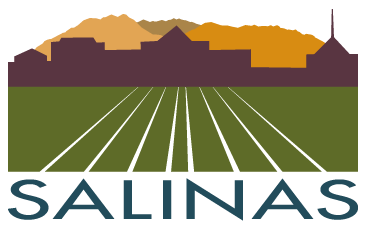1970 - 1979
In 1970, the Salinas population was 61,978. Revitalization of the downtown area of Salinas continued to be a hot topic in the local paper and with the business community. Merchants approved the central city revitalization study even though businesses were slated to pay a surcharge for the consultant. In 1973 the city’s Center City Authority decided to focus on the development of a shopping and tourist oriented “Oldtown” that would reflect the community’ s rodeo and western heritage. The planning commission approved the plan in November of 1973.
In April 1974, the Salinas City Council agreed to a $1 million investment in municipal funds for the revitalization of the city’s deteriorating downtown core. Despite some lively opposition, the city council approved the downtown revitalization plan in July of the same year.
Throughout 1975 the project was of great interest to the community. The Oldtown Gazette published the first issue of central city revi talization news in May. Roger Anderman, Director of Community Development, and Russ Hoss, Chief of Redevelopment co - hosted a weekly 15 minute radio talk show, “Downtown,” on Radio KKEE 1570 AM at 8:15 and 10:15 on Sunday mornings.
The revitalization efforts were considered a success. The January/February 1976 Oldtown Gazette reported that some downtown area businesses experienced a forty percent increase in business over the previous Christmas season.
But merchants remained concerned about the North ridge Shopping Center. The mall opened on October 25, 1972 amid much fanfare and, as the Salinas Californian remarked in a 1991 article, retail business in Salinas was never quite the same. Northridge was the largest climate - controlled retail development between San Jose and Santa Barbara. The enclosed weatherproof mall with a park - like environment was still a draw in the early nineties. According to the Salinas Californian, Northridge became the leading shopping center in Salinas and throughout the Central Coast.
In 1977, the downtown merchants opposed an expansion of Northridge that would accommodate Sears, then a mainstay of the Valley Center Shopping Center on South Main Street. Property owners in the “Oldtown” area were also perturbed when the city, prompted by an earthquake report, proposed that downtown buildings in the core of Salinas be brought up to two - thirds of city code or be demolished. Opposition killed the earthquake ordinance in 1979, which then had unfortunate consequences in1989 when a 7.0 magnitude earthquake struck the area.
Meanwhile in East Salinas, residents and community leaders voiced concerns about their own area. The Salinas Community Development Advisory Committee responded in 1975, giving priority to Hebbron Heights to build a community center, to clear out and replace substandard housing, and to initiate a community - wide improvement program.
Salinas Mayor Henry Hibino officially opened Hebbron Heights Park on June 1, 1975. Among the attendees was John Ramos, a young member of the community group that in 1973 requested recreational facilities for the blighted “pork chop hill” [Reverend E. G. Valverde of the Church of Jesus Christ in East Salinas referred to the park area as “pork chop hill.”] area in East Salinas. On October 24, 1976, Mayor Hibino dedicated the Hebbron Neighborhood Center, a remodeled appliance repair shop at 725 E. Market Street, and vowed a Hebbron upgrade. Some residents worried that proposed city “improvements” would price them out of a home.
Residents of North Salinas had their own concerns. In January of 1975, at neighborhood meetings in North Salinas, resident s indicated that housing, recreation, and jobs were key issues for them in spending city Housing and Community Development Act funds.
On the agricultural front unionization dominated the news during the first part of the decade. After efforts to organize grape workers in Delano, Cesar Chavez and the United Farm Workers Organizing Committee (UFWOC) began organizing activities in the Salinas Valley. Concerned about the events in Delano, some local growers had signed backroom contracts with the Teamsters Union for their workers, without the workers’ knowledge. Protesting this failure to involve workers in the negotiations, Cesar Chavez held a rally at a teen center “on the Mexican side” of Salinas in July of 1970. A temporary UFWOC headquarters was set up inside the Salinas Office of the Mexican - American Political Association. Early in August more than three thousand farm workers gathered on the Hartnell College’s football field showing support for his efforts. By late August the UFWOC called for strikes against many local firms. Eventually InterHarvest, Fresh Pict and Pic N Pac signed with the UFWOC [The Fight in the Fields , Susan Ferriss and Ricardo Sandoval, 1977].
Cesar Chavez called for a boycott of all non - UFWOC lettuce companies. In December a judge placed Chavez in the Monterey County Jail then on Alisal Street, indefinitely, until he complied with an order to stop boycotting Bud Antle Lettuce. Chavez made the most of his solitude in jail, reading mail and books. While in jail he was visited by Ethel Kennedy, widow of Robert Kennedy. A crowd of two thousand Chavez supporters greeted her, but a hostile mob also appeared. Coretta Scott King, widow of Doctor Martin Luther King visited Chavez as well. On Christmas Eve 1970 Chavez was released pending the outcome of an appeal [ibid].
By 1971 Chavez and the farm workers union had won key contracts. In 1976 California’s passage of the Agricultural Labor Relations Act set up the means for workers to petition for a union representation election. Nonetheless labor disputes continued throughout the period. After his death in April of 1993, community leaders said the key to Chavez’s success was his non - violent approach and his willingness to sacrifice.
There was another agricultural landmark in 1975. Hearings were held in Salinas and San Diego in March of 1975. An overflowing crowd of farm workers and growers filled the Salinas City Rotunda to discuss the pros and cons of “el cortito,” or the short handle hoe. Workers testified to the crippling effects caused by extended use of the hoe. Shortly thereafter in April the State of California banned its use in the fields of California.
The Seventies also brought the rise of several organizations working for the betterment of the Latino Community, MEChA and LULAC among them. A chapter of Movimiento Estudantil Chicano de Aztlan, or MEChA, formed at Hartnell College in the spring of 1970. In June, Hartnell College trustees approved the appointment of a special student services officer, Paul Nava, as a first step toward meeting the requests of MEChA to address the needs of Mexican American students. In January of 1973, the local chapter of the League of United Latin American Citizens (LULAC) was formed. Over time LULAC would challenge practices on many fronts. Both organizations still exist in 2009 as a strong presence for Latinos in Salinas.
On the homelessness front, a ninety day task force survey determined that an average of fifty people wandered the streets or slept in their cars every night in Salinas. The Swinging Door, a day facility for the homeless primarily intended to get the transient population off the 100 block of Main Street, opened in 1974 at East Market and Pajaro Street. The police considered the program a success.
Mrs. Beverly McIntyre also opened the Home for the Homeless to assist women and families in difficulty. Other institutions in the area providing accommodations were Sunrise House and Victory Mission, while the Salvation Army, present in Salinas since 1894 and known for its quiet competence, offered food, financial help, and referrals.
There were other milestones for the city. In 1973, the Soroptomists gave a statue of John Steinbeck by artist Tom Fitzwater to the Salinas Public Library on Lincoln Street. Placed on the lawn of the library, the statue was visited by thousands of visitors to Salinas, Steinbeck’s birthplace.
In March of 1973, Salinas native Lt. Cmdr. Everett Alvarez, who was captured August 5, 1964 and held by the North Vietnamese for eight years and six months, was honored with a “Welcome Home” day in Salinas that included presentation of a salad bowl, the traditional symbol of the Salinas Valley. An account of his experience, Chained Eagle, was published in 1989. In 1995 a new high school was named in his honor.
The Valley Guild, organized in 1971, opened the Steinbeck House on Central Avenue as a restaurant in 1974 to authentically preserve John Steinbeck’s childhood home and also to generate new revenue for local charities.
Finally, in June of 1978 Proposition 13 was passed limiting property taxes. Despite talk of closing Salinas libraries, the new East Salinas Santa Lucia Library, later renamed for Cesar Chavez, finally opened in October of 1978. After passage of the proposition, the thrust of the Downtown Revitalization program was changed, and the city council decided that all development must pay for itself. A new era of government for Monterey County and its cities had arrived.
 Facebook
Facebook Twitter
Twitter Instagram
Instagram Youtube
Youtube